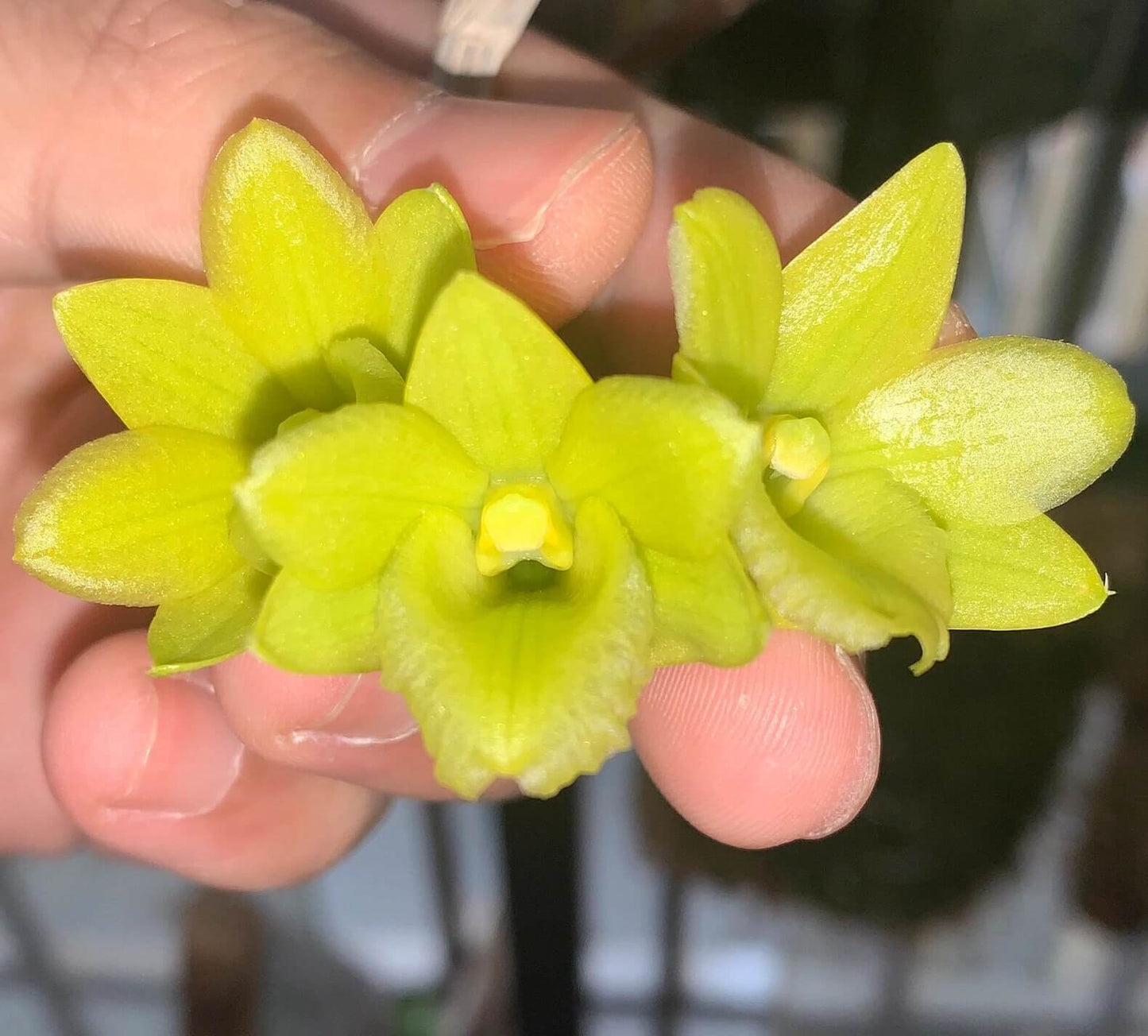Begin With Plants
Dendrobium cerinum
Dendrobium cerinum
Couldn't load pickup availability
Dendrobium cerinum is a rare and beautiful orchid, native exclusively to Luzon in the Philippines, boasting waxy, yellow-green pendant flowers and a captivating form. Thriving in warm, humid conditions with bright but gentle light, it rewards growers with its graceful blooms and manageable care routine.
Features:
-
Grows as a medium-sized warm-growing epiphyte, often upright to semi-pendulous, with cylindrical canes and semi-deciduous leaves tinged purple when young.
-
Blooms in spring on pendent inflorescences from leafless stems, producing up to eight waxy-textured, yellowish-green flowers (~3.5 cm across) with occasional red blotches or color variations on the lip.
-
Also appears in Borneo and Thailand, according to orchid species records.
Care Tips:
-
Light: Bright, indirect light is ideal; avoid harsh sun exposure. East or lightly shaded south windows work best.
-
Temperature: Keep daytime temperatures around 20–30 °C (68–86 °F), with a slight drop at night for optimal growth.
-
Humidity: Aim for moderate to high humidity (50–70%)—you can use misting or humidity trays if needed.
-
Watering: Water every 1–2 weeks, allowing the medium to partially dry between waterings. Reduce frequency during winter, but avoid letting it fully dry out.
-
Potting Medium: Use a well-draining orchid mix—typically bark with perlite or sphagnum moss to promote fast drainage.
-
Fertilizer: Apply a balanced orchid fertilizer during the growing season; adjust frequency based on your environment—every few weeks is commonly sufficient.
-
Rest & Repotting: Some Dendrobiums benefit from a slightly drier rest period in winter to encourage blooming. Repot every 2–3 years or when potting mix deteriorates—ideally during active growth.
-
Pruning & Propagation: After flowering, trim spent blooms but preserve canes. New growth or keikis (plantlets) can be used for propagation.
Share

